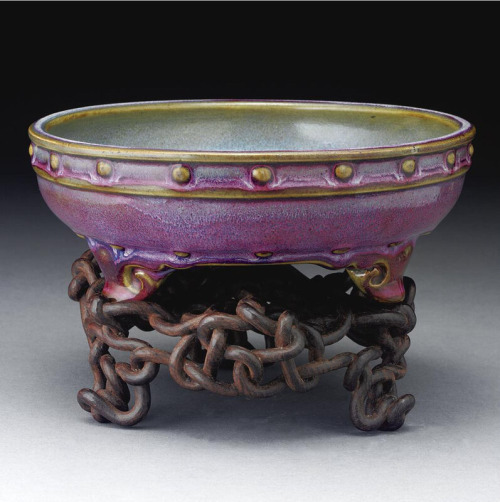Photo

Sculptures from the Hpo Win caves, near Monywa, Burma
36 notes
·
View notes
Text





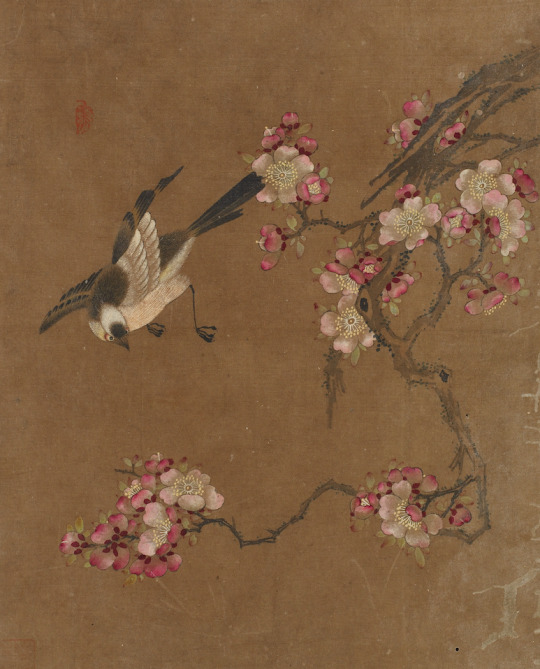



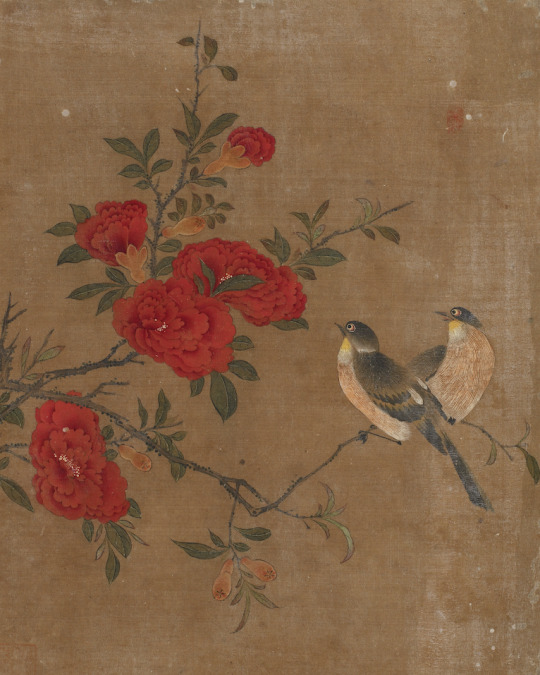
Ming dynasty 1368-1644 Ink and color on silk each 25.9 x 20.9 cm (10 3/16 x 8 1/4 in) Freer Gallery of Art
65 notes
·
View notes
Text



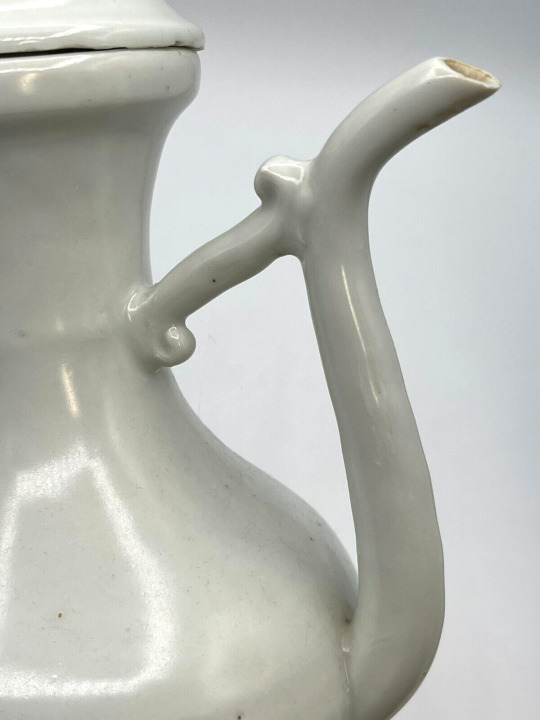

A Rare Chinese White Glazed Ewer Yongle Period, Ming Dynasty ebay SevenAuctions
3 notes
·
View notes
Text
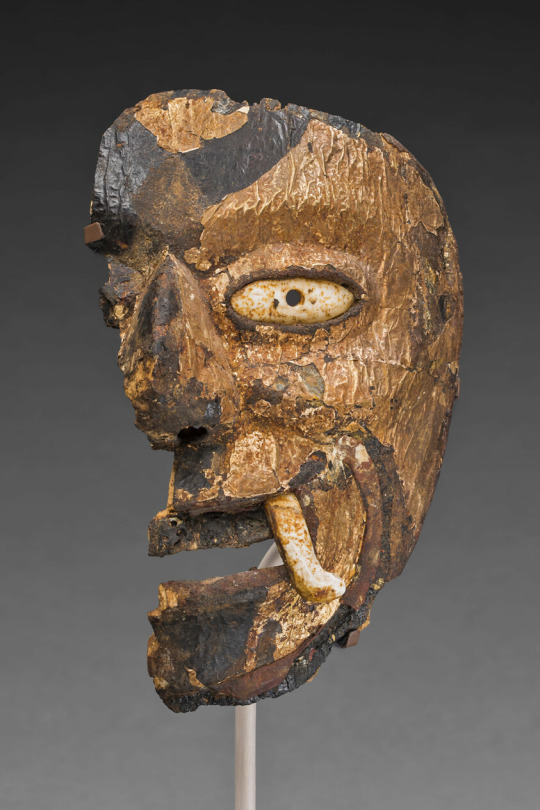
Miniature Mask
Possibly Mixtec, 1300–1400
Small masks such as this were worn as part of ceremonial attire. Figures representing deities and ancestors were often attached to the costumes of the dancers and performers who enacted mythical and historic dramas during theatrical ritual presentations.
43 notes
·
View notes
Photo

This bronze mirror is decorated with the Korean adaptation of a Chinese landscape scene. Foreign influences were a major part of Goryeo period art in Korea. The figures on clouds traveling toward the cassia tree are understood as immortals. The reverse of the mirror would have been highly polished and reflective.
Posted by Rebekah Pollock
Mirror, 13th-14th century. Bronze, 7/16 x 7 3/8 in. (1.1 x 18.8 cm). Brooklyn Museum, Gift of Dr. and Mrs. John P. Lyden, 1994.197.4. Creative Commons-BY (Photo: Brooklyn Museum, 1994.197.4.jpg)
87 notes
·
View notes
Text
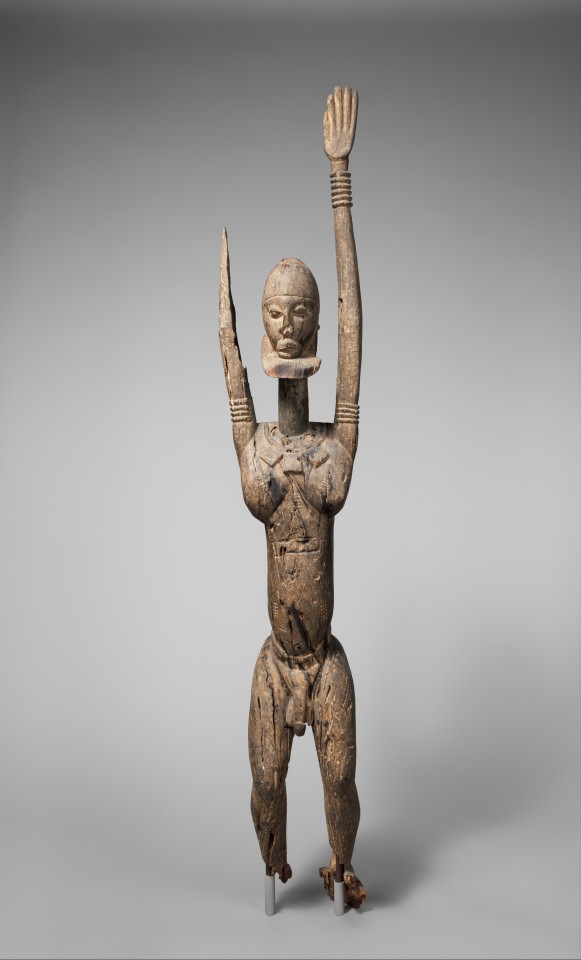
Male Figure with Raised Arms
Dogon peoples, 14th–17th century
The most distinctive subject rendered by Dogon sculptures is that of a single figure standing with raised arms. This posture has usually been interpreted as a gesture of prayer—an effort to link earth and heavens—and it has been suggested that it may represent an appeal for rain. This masterpiece of Dogon figurative art depicts a man with a well-modeled body in a naturalistic stance. The artist has carefully rendered the figure's musculature, anatomical detail, and body ornament. His stylized beard identifies him as an elder and an individual whose age and experience entitle him to participate in the most important religious, political, and social affairs of Dogon society. The figure wears wristlets, armlets, and anklets that indicate his status, as well as a belt and neck pendants resembling leather talismans that also suggest his spiritual importance.
17 notes
·
View notes
Photo

Textile Ornament. 14th–15th century.
Credit line: Gift of Mr. and Mrs. Nathan Cummings, 1964
https://www.metmuseum.org/art/collection/search/308753
5 notes
·
View notes
Text


Mandalas from Kasuga and Sannō depicting Buddhas in the top row and the Kami they incarnated as in the bottom row.
63 notes
·
View notes
Photo
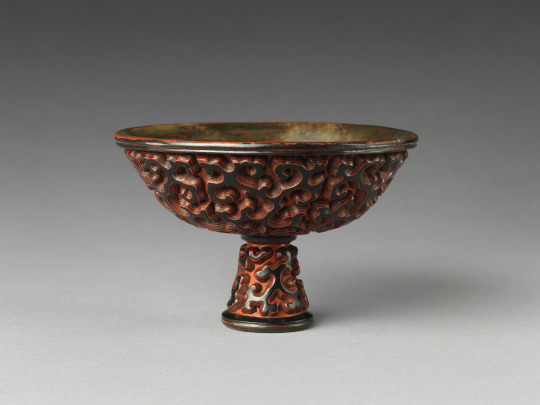
Stem cup with stylized clouds. 14th century.
Credit line: Gift of Florence and Herbert Irving, 2015
https://www.metmuseum.org/art/collection/search/39705
12 notes
·
View notes
Text

Crown of the Holy Roman Emperor from the tomb of Henry VII in the Cathedral of Pisa, ca. 1300-1312
120 notes
·
View notes
Text

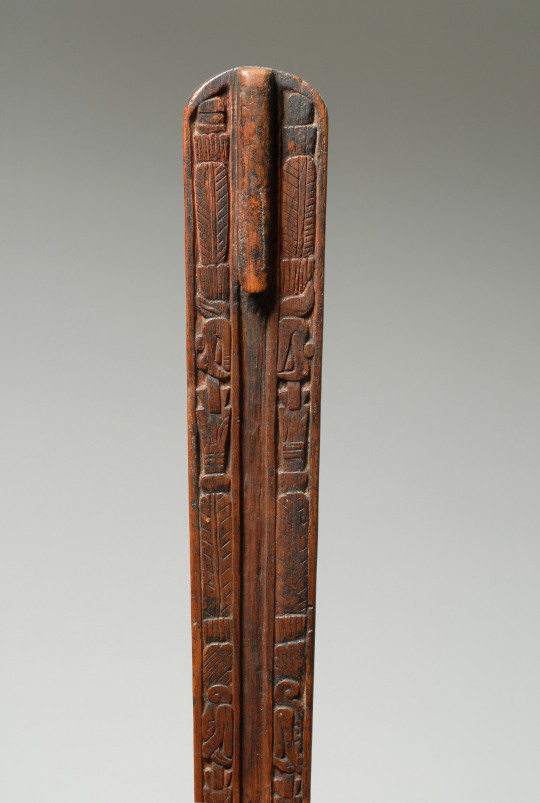

Atl atl
Mixteca Alta, Late Postclassic, 1200-1520 CE
Spear throwers, also known by the Nahuatl term atlatl, were commonly used as military and ritual weapons. They extend the arm of the user, enabling him or her to propel a dart with greater force than would otherwise be possible. This atlatl is made of a single piece of hard wood carved on both sides. The upper surface has a slight protrusion at the distal end to anchor a dart, and it is decorated with a double pattern of paired darts. The lower surface is carved with more complex imagery, which can be read vertically.
23 notes
·
View notes
Text
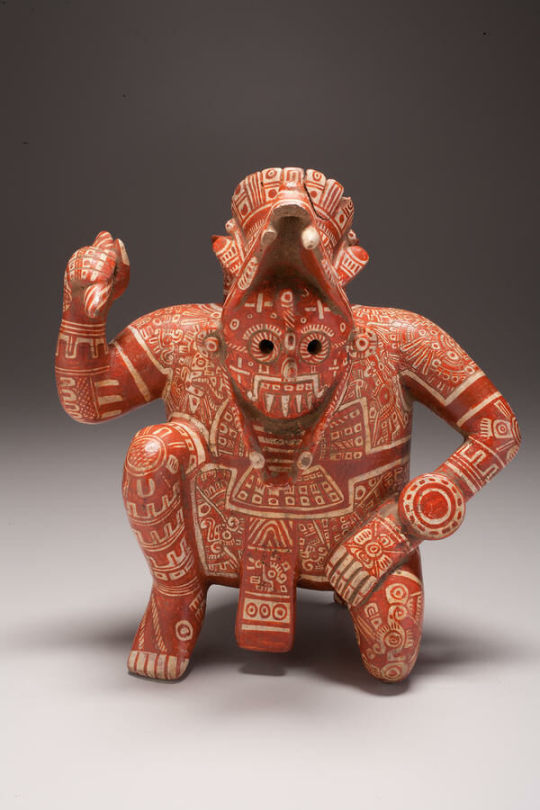
vaisseau du dieu de la pluie. Lieu d'origine _ Mexique, Colima, El Chanal, style mixtèque.
15 notes
·
View notes
Photo
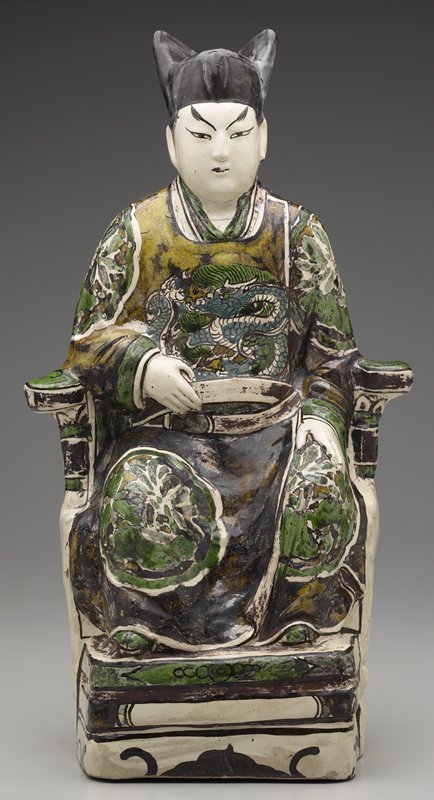
Figure of Wenchang, Deity of Literature, 12th-13th century, Minneapolis Institute of Art: Chinese, South and Southeast Asian Art
male figure seated on a chair placed on a small podium; man has PL hand on thigh and PR hand on belt; glazed in green, blue, brown and yellow; dragon on front of man’s garment Wenchang is the combination of two deified personages. The first is a local deity called Zitong who was worshiped in Sichuan during the Tang dynasty. The second is the deity of the constellation Ursa Major known by the Chinese as Kui. The reason why and how they became to be merged remains unclear, however, after the Tang dynasty the two became a single deity under the name of Wenchang and was venerated as the Deity of Literature. Wenchang is represented as a handsome man in the sitting posture. Sometimes he is also shown standing upon a fish, because the carp of the Yellow River is believed to make an ascent of the stream in the spring of each year, and those who succeed in passing the rapids of Longmen in Henan, become changed into dragons. This supposed transformation of fish to dragon has become an example and synonym for the literary success of the industrious student. The relatively large size and unusual palette of green, blue, and aubergine enamels distinguish this Cizhou ceramic. It is a fine example of early, overglaze enamel decoration.
Size: 17 ½ x 6 7/8 x 7 3/8 in. (44.45 x 17.46 x 18.73 cm)
Medium: Cizhou ware Slip coated stoneware with overglaze enamels on a clear glaze
https://collections.artsmia.org/art/163/
13 notes
·
View notes
Text

“BLACK AND WHITE LIBATION CUP (chiu pa pei) Graceful tazza-shape of its period. Tz'u-chou ware of dense light buff texture.The exterior with a characteristic black decoration presenting two narrow bands which enclose isolated leaf-like forms and small scrolls, while the slender stem is simply glazed in lustrous black. Ascribable to the close of the Sung dynasty, 960-1279, A.D. Height, 3 inches; diameter, 3¾ inches.”
From: “The Kélékian collection of ancient Chinese potteries by Kelekian, Dikran; Art Institute of Chicago; Getz, John” 1917.
3 notes
·
View notes
Text

“Kyogen Hakama (Unkaku Kyogen Hakama) The earliest Korai tea bowl It is named because the pattern in the middle resembles the pattern of a hakama of a Kyogen-shi.”
Korai tea bowl Made on the Korean Peninsula. It was not originally made as a tea bowl, but many of them "echore" the pottery for everyday use as a tea bowl. As the times go down a little, it will be produced by order from Japan. When cafes were introduced to Japan and the Ashikaga Shogun family and others were doing it, karamono tea bowls such as Tenmoku and celadon were used. When "apology tea" began, attention was focused on the "apology" Goryeo tea bowls, and it seems that Goryeo tea bowls were popular during the Tensho era (the heyday of Nobunaga and Hideyoshi). The names (classifications) of various tea bowls appear below, but these classifications were made by tea masters and are believed to have been completed at the end of the Edo period. It is almost consistent with the current archaeological view.
Korai tea bowls have their own personality in one bowl. Tsukucha cherished its individuality, so the characteristic tea bowl was prized. It is completely different from a karamono tea bowl that is ready like factory production.
The relationship between the Korean Peninsula and Japanese tea ceremony is deep.
In addition to the Korai tea bowl introduced here, the potter who brought back by Hideyoshi's dispatch of troops to Korea became a big bearer of the national ware tea bowl.
14 notes
·
View notes
Text

“Yaozhou Celadon-Glazed Peony Ewer, Northern Song Dynasty”
From: “Tao ci qi jian shang yu shou cang” by Wang, Liying; 1994.
9 notes
·
View notes
